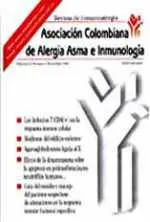Asthma education – Objectives
Overview conceptual approaches
Review key educational messages
Discuss strategies for improving outcomes
Discuss future directions
Asthma Education
Integral part of asthma care
Partnership
Multidimensional and dynamic process
Consistency of messages
Longterm, individualized strategies
Continuous improvement
Conceptual framework for health Eduacation
Health needs
Access to health system
Motivation
Barriers
Messages and expectations
Communication and negotiation
Adherence
Key issues in asthma education
Who is your audience?
What are their educational needs?
What are your messages?
Which method is most effective?
How to reinforce behavior changes?
Is there room form improvement?
Audience
Patients
Physicians
Allied health professionals
Public
Policy/decision-makers
Use terms patient understands
Advise based on where patient is at
Seek feedback e.g. fears
Periodic followup
Non-adherence
Major barrier between effective therapy and expected outcome 3 types non-adherence
Erratic – too busy, forgot, stress
Unwitting – poor technique, misunderstood
Intellingent – adverse effect, ineffective
Strategies to improve adherence
Understand patient´s perception of severity
Explore impact of asthma care lifestyle
Invite expression of any fears or mistakes
Encourage family to attend education
Strategies to improve adherence (Continued)
Explore cultural differences
Simplity medication program or content |
Audience – Patients
Age
Language
Culture
Predisposing factors
External support(s)
Need/Motivating factors
Key messages for adult asthma
Basic asthma pathophysiology
Objetive monitoring
Environmental and trigger control
Effective medication use
Parthership in care for acute attacks
Educational media
Handouts
Videotape
(Games)
Computer software
Interactive kiosks
Internet
Outcomes – Motivators for change
Meeting personal goals
Health status
Adverse effects
Health care access/use
Outcome – key Barriers
Inadequate access
Inconsistent message
Ineffective communication
Fear or low self-confidence
Non-adherence
Strategies for improving communication
Active listening
Mutual respect
Periodic review of technique, action plan
Provide timely, consistent feedback
Asthma education – Summary
Multidimensional and dynamic process
Understand yor audience
Promote partnership in care
Consistent, yet individualized approach
Identify key barriers/ strategies
Physician/educator communication
Patient adherence
Access for periodic review
Timely feedback
Future directions
Internet education
Evidence-based, collaborative learning
Telephonic monitorins devices
Interactive distance training/ support |





